Kingston, New York’s Four Corners is celebrated for its craggy stone structures: it’s the only crossroad in the country in which all of the buildings date to pre-Revolutionary War days. They’re well-preserved, zoned for residential and commercial use, and not entirely time warps: Number 45 Crown Street is the new headquarters of Sawkille, Jonah Meyer and Tara DeLisio’s artisanal furniture company, a longstanding Remodelista favorite.
The Sawkille workshop has been in Kingston for the last 20 years, so when Tara, creative director of the business, saw the house in a listing, the couple made the decision to move out of their gallery-like space in nearby Rhinebeck and turn the landmark into their showcase, preserving the interior as is, from front parlor and dining room to upstairs bedroom and bath. Says Jonah, “It was a cool opportunity to present our work in a residential setting.”
Jonah grew up in what he describes as a hippie family of makers: his father, a jeweler, built their house in Central Pennsylvania, and his mother is a potter. Jonah himself majored in painting at RISD and fell into furniture design after building some chairs for his senior show: “all of my professors bought them, so I kept making chairs.” Someone who is also incessantly drawing, painting, and whittling, he welcomed the opportunity to playfully but respectfully leave his stamp on the place. Come see.
Photography by Gentl and Hyers, courtesy of Sawkille (@sawkillecompany).
Above: In the 17th century, 45 Crown Street was built as a doctor’s office. Burned like so much of the city during the War of Independence—Kingston was then the first capital of New York State—it was rebuilt as a residence, and, Jonah reports, has graves in the basement.
Jonah hand painted the Sawkille sign and included the skull because locals tell him the house is haunted: “The story is the original occupant, the doctor, went to Europe and came back with a wife. They were seen walking in the town—and then they stopped seeing her. Kids passing by peered through the parted curtains and spotted the doctor dining with a skeleton seated across from him. He was run out of town.”
 Above: The compact two-story house shares a backyard with the adjoining dwelling—some Four Corners structures are said to have been part of the Underground Railroad. Sawkille is known for its elegant interpretations of classic American forms: shown here, the workshop’s signature three-legged stools in ebonized and bleached wood.
Above: The compact two-story house shares a backyard with the adjoining dwelling—some Four Corners structures are said to have been part of the Underground Railroad. Sawkille is known for its elegant interpretations of classic American forms: shown here, the workshop’s signature three-legged stools in ebonized and bleached wood.
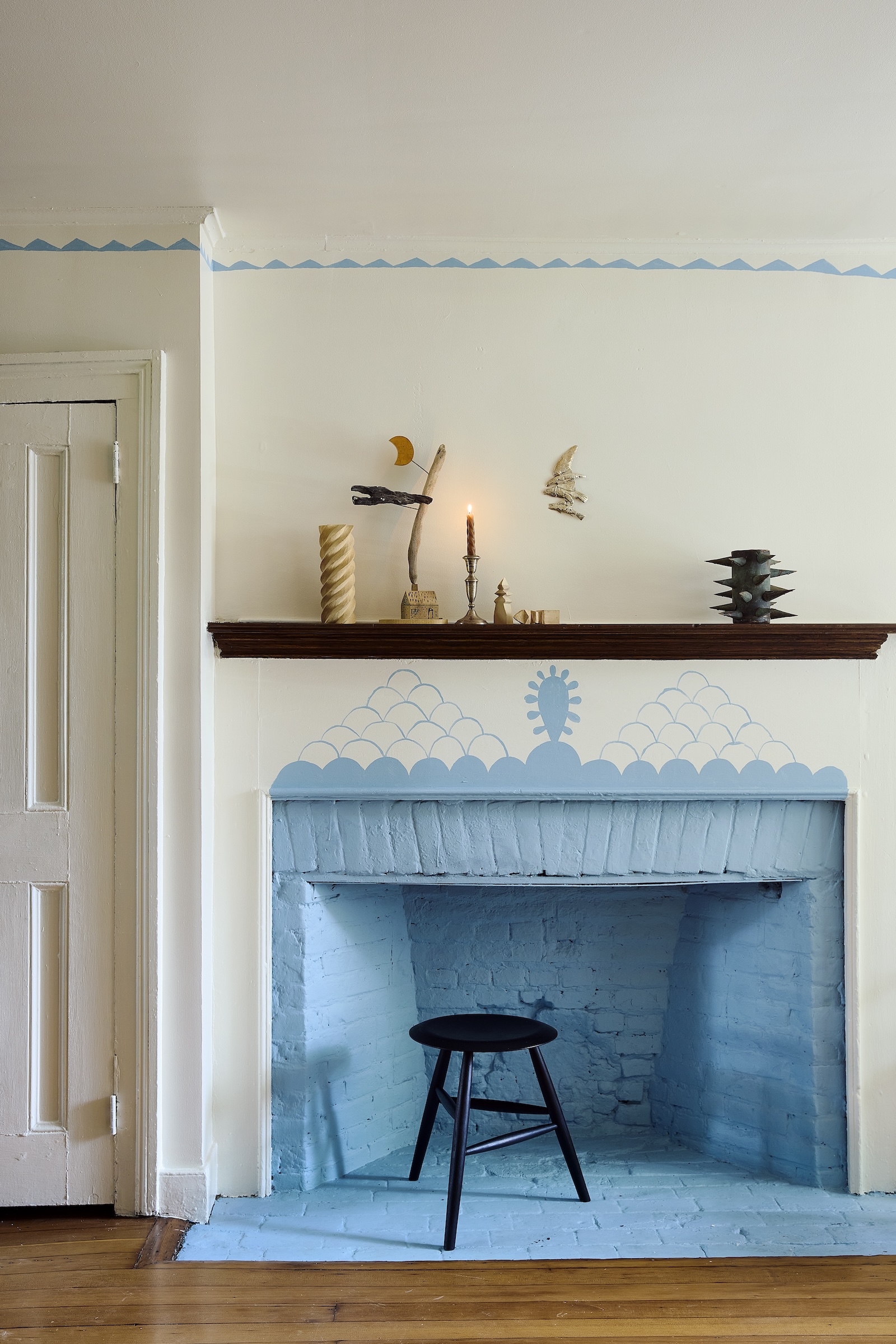 Above: Though the exterior of the building can’t be touched, painting is allowed on the interior. Inspired by Delft tiles, Tara wanted to highlight the living room in blue; Jonah went with a Benjamin Moore’s Marlboro Blue that he free painted on the mantel and in a running band under the ceiling. The walls are Linen White, one of our Architects’ 10 Favorite White Paint Picks.
Above: Though the exterior of the building can’t be touched, painting is allowed on the interior. Inspired by Delft tiles, Tara wanted to highlight the living room in blue; Jonah went with a Benjamin Moore’s Marlboro Blue that he free painted on the mantel and in a running band under the ceiling. The walls are Linen White, one of our Architects’ 10 Favorite White Paint Picks.
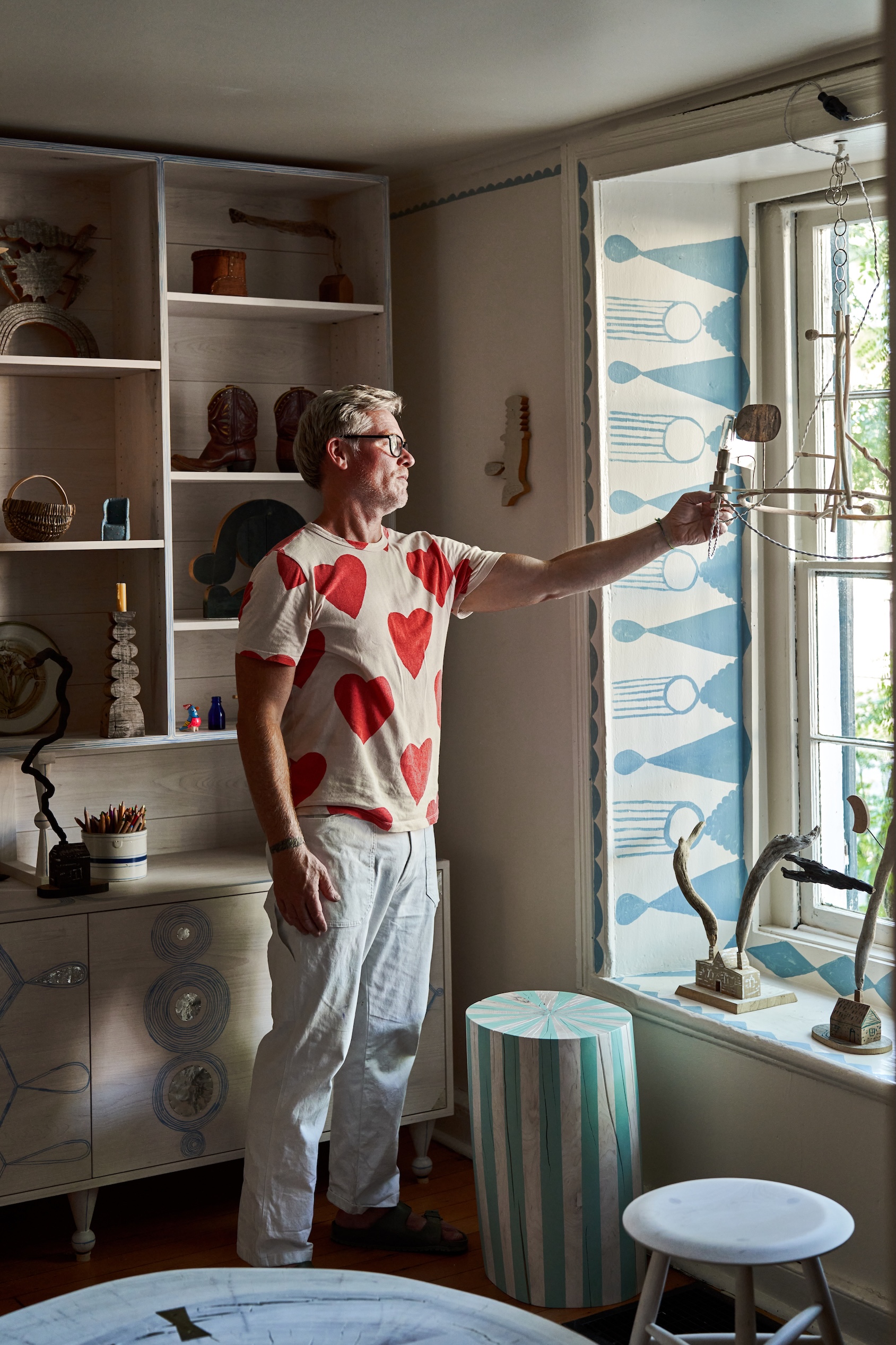 Above: Jonah, shown positioning a Rousseau chandelier that he made from found branches, also embellished the windowsills. The striped table/stand is from Sawkille’s Stumps collection of salvaged wood: “after a storm comes through, I’m out with a chain saw.”
Above: Jonah, shown positioning a Rousseau chandelier that he made from found branches, also embellished the windowsills. The striped table/stand is from Sawkille’s Stumps collection of salvaged wood: “after a storm comes through, I’m out with a chain saw.”
 Above: The bleached maple sideboard, painted tattoo-style with India ink, displays some of Jonah’s carvings. Note the shiny detailing on the doors: lately Jonah and his assistant, Tara’s niece Niaya DeLisio, have been making hammered sterling silver elements in the studio: “I worked for my father in his jewelry shop one summer and learned the trade but couldn’t stand it—everything was too small. Thirty five years later, I’m picking it up again.”
Above: The bleached maple sideboard, painted tattoo-style with India ink, displays some of Jonah’s carvings. Note the shiny detailing on the doors: lately Jonah and his assistant, Tara’s niece Niaya DeLisio, have been making hammered sterling silver elements in the studio: “I worked for my father in his jewelry shop one summer and learned the trade but couldn’t stand it—everything was too small. Thirty five years later, I’m picking it up again.”
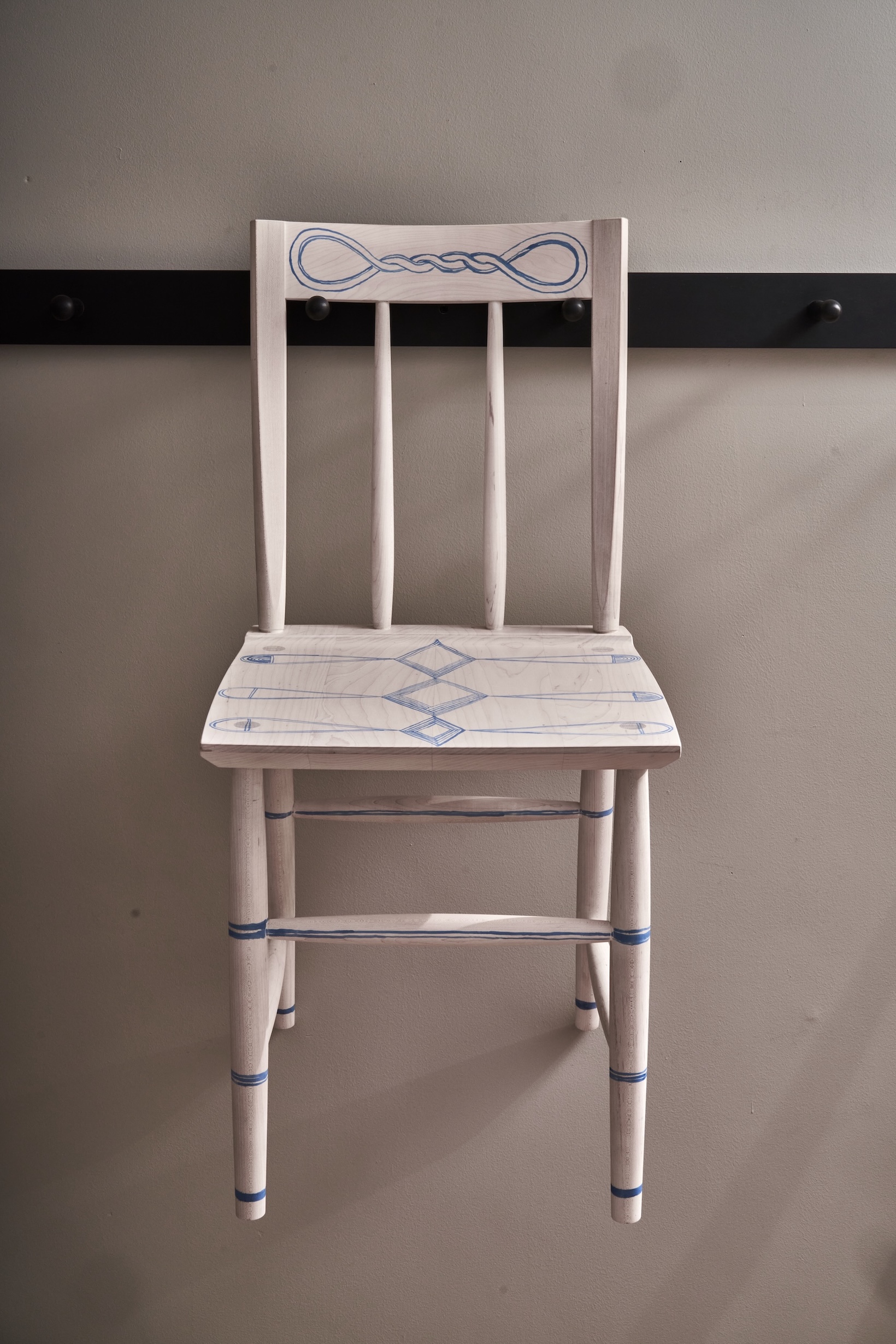 Above: The Penn Chair, in bleached maple painted with India ink, hangs on the dining room peg rail. Sawkille’s designs are made by hand to order and offered in a range of woods and finishes. The workshop is zero waste and uses only “sustainably forested materials.”
Above: The Penn Chair, in bleached maple painted with India ink, hangs on the dining room peg rail. Sawkille’s designs are made by hand to order and offered in a range of woods and finishes. The workshop is zero waste and uses only “sustainably forested materials.”
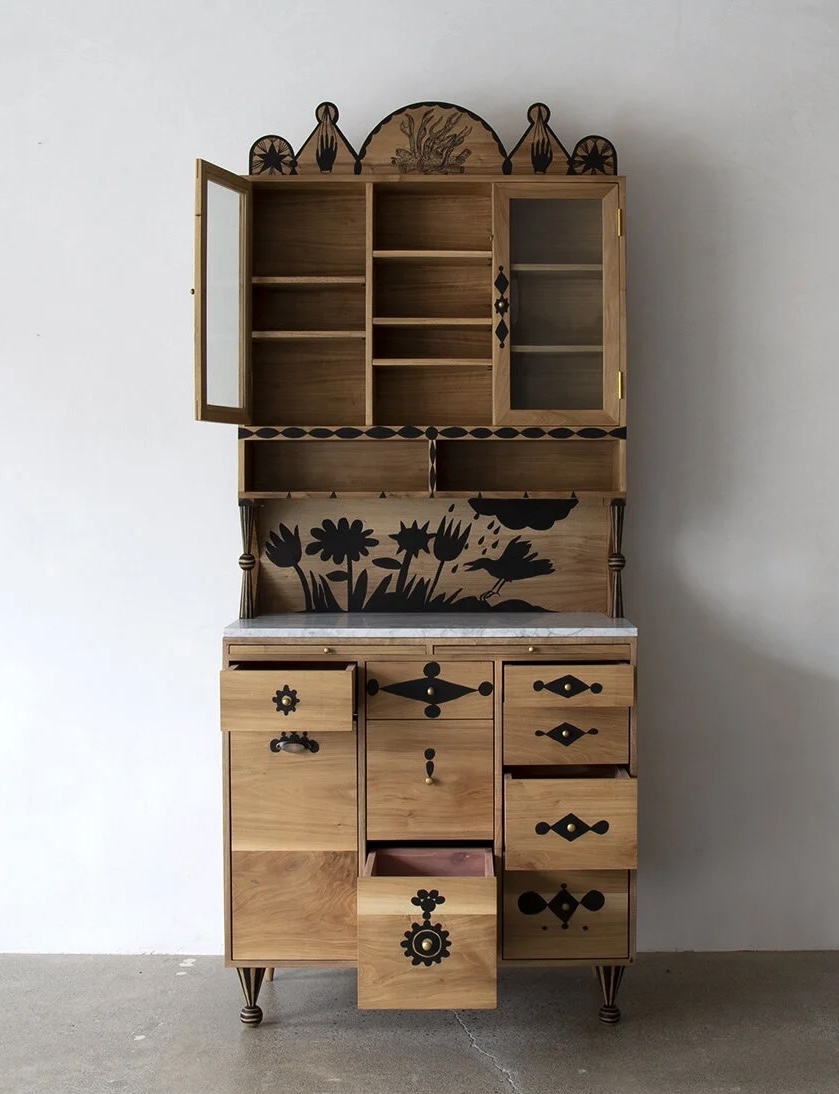 Above: The Witches Cabinet is available in American black walnut (shown), hard maple, and ash, all of which can be oiled, bleached, or ebonized—and custom painted.
Above: The Witches Cabinet is available in American black walnut (shown), hard maple, and ash, all of which can be oiled, bleached, or ebonized—and custom painted.
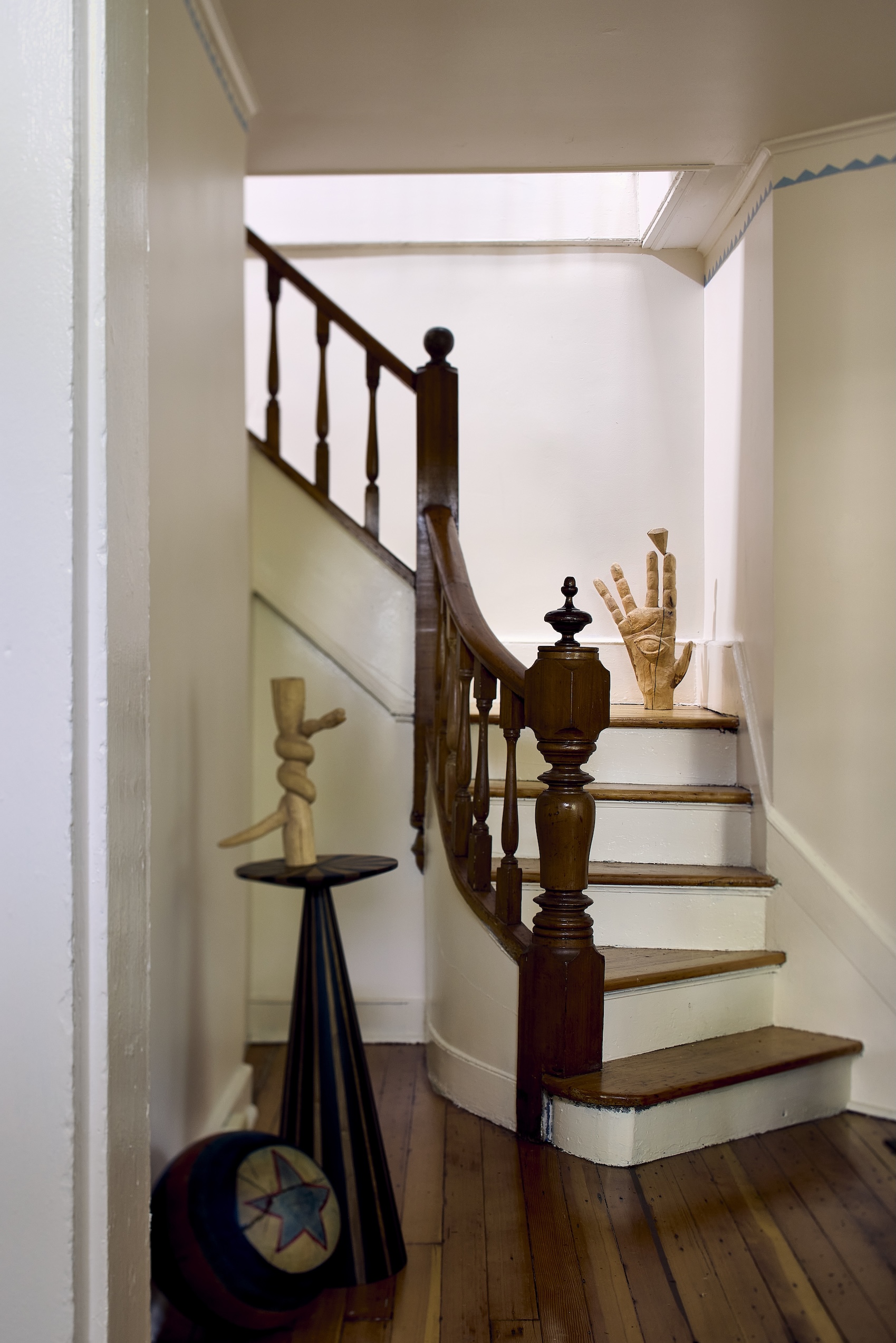 Above: The winding stair has since been adorned with sterling silver fish appliqués on the risers. The old wooden flooring was newly sanded. Jonah likes to turn studio leftovers into decorative wooden balls.
Above: The winding stair has since been adorned with sterling silver fish appliqués on the risers. The old wooden flooring was newly sanded. Jonah likes to turn studio leftovers into decorative wooden balls.
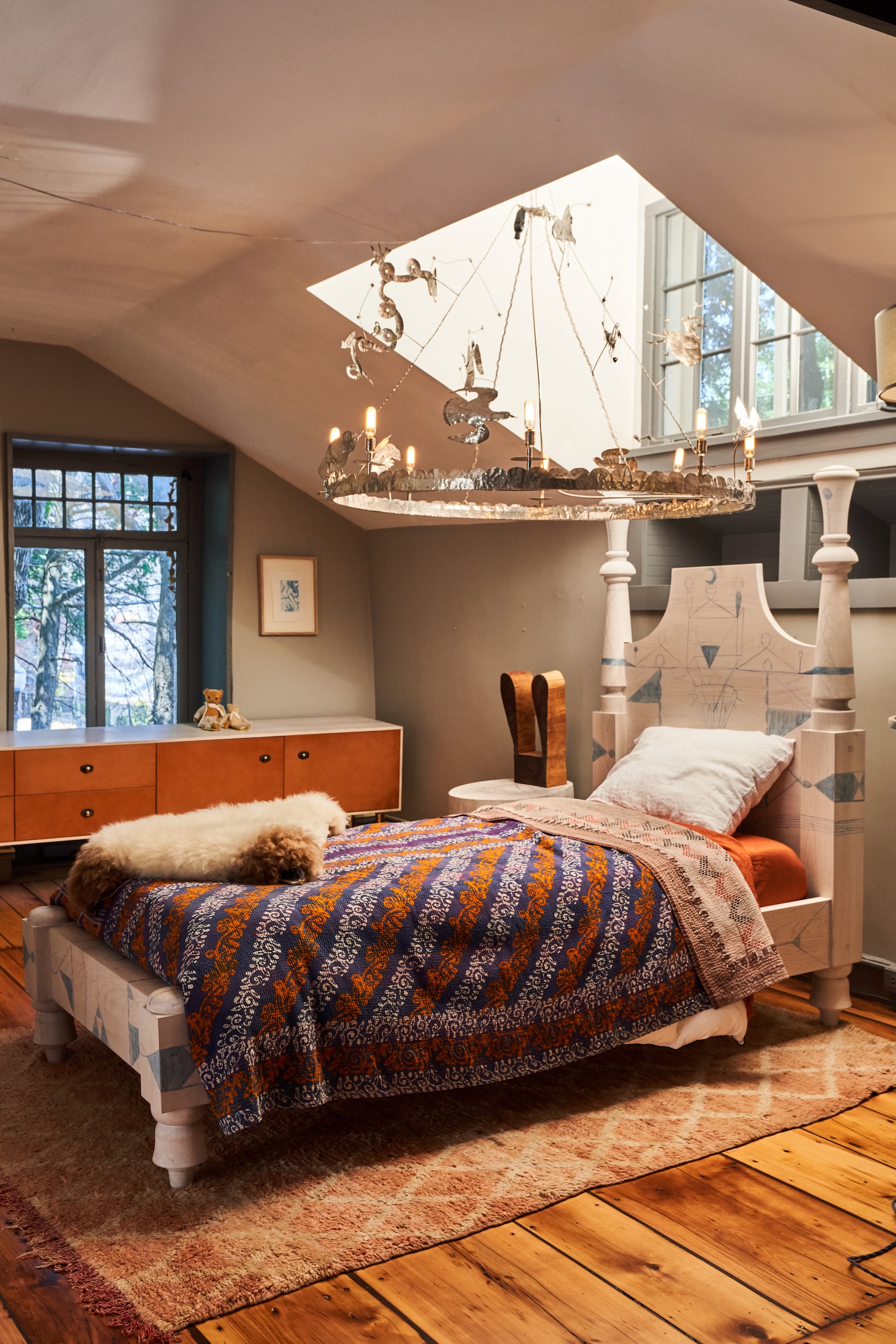 Above: An elaborate version of Sawkille’s Millstream Bed was made for the upstairs space. It stands under an existing skylight-like dormer hung with a sterling silver chandelier. Tara found its Kantha quilt at Bosco’s Mercantile in nearby Saugerties. The chest of drawers is the Hatfield Credenza.
Above: An elaborate version of Sawkille’s Millstream Bed was made for the upstairs space. It stands under an existing skylight-like dormer hung with a sterling silver chandelier. Tara found its Kantha quilt at Bosco’s Mercantile in nearby Saugerties. The chest of drawers is the Hatfield Credenza.
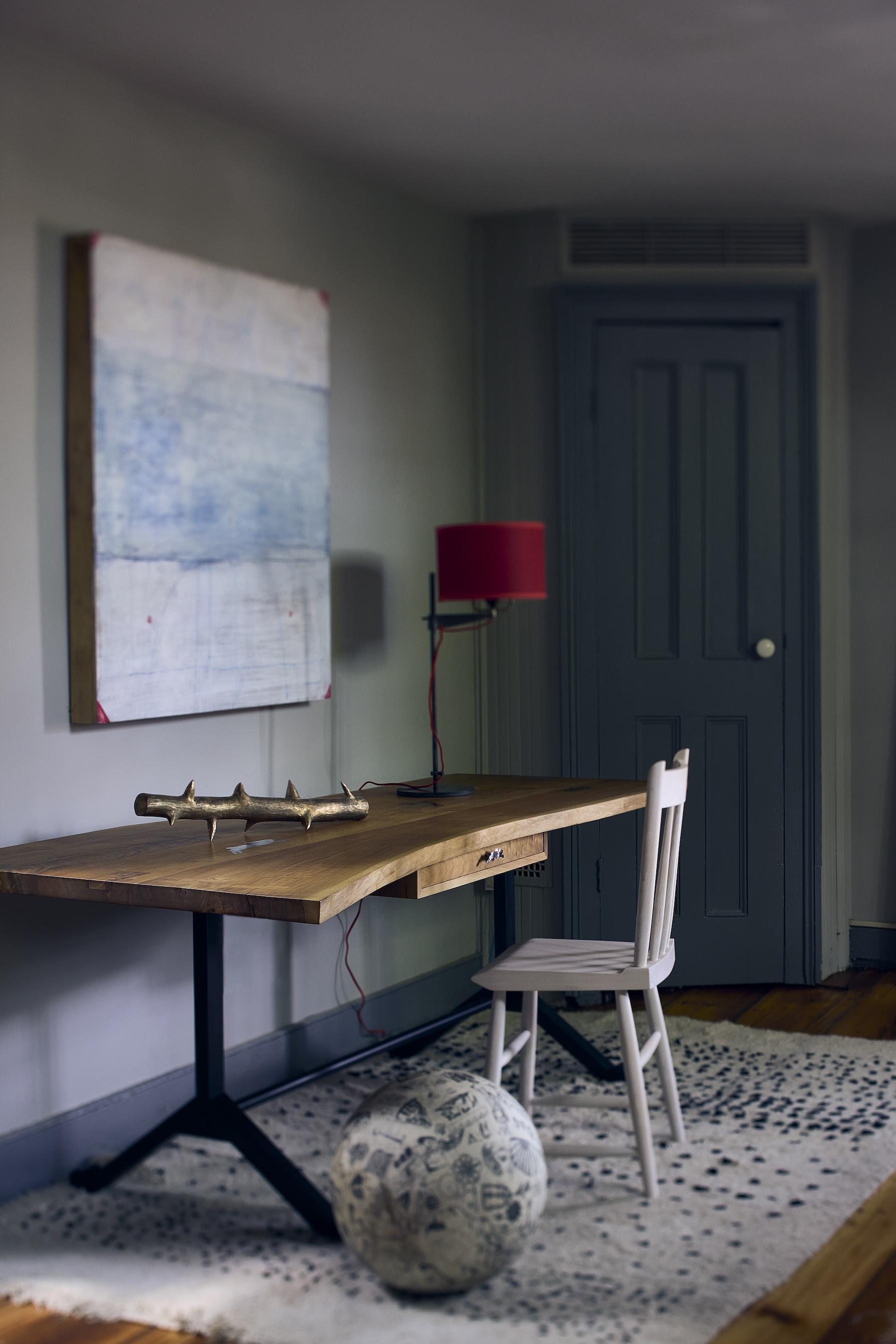 Above: A walnut desk with a waterjet-cut steel base holds one of Jonah’s bronze Thorn Branch sculptures (“during Covid, we added a casting foundry to our shop”), and a Winnisook Table Lamp. Jonah drew all over the wooden ball on the floor using old-fashioned carbon paper from office supply stores: “it has such a nice line quality and the ink doesn’t wear off.”
Above: A walnut desk with a waterjet-cut steel base holds one of Jonah’s bronze Thorn Branch sculptures (“during Covid, we added a casting foundry to our shop”), and a Winnisook Table Lamp. Jonah drew all over the wooden ball on the floor using old-fashioned carbon paper from office supply stores: “it has such a nice line quality and the ink doesn’t wear off.”
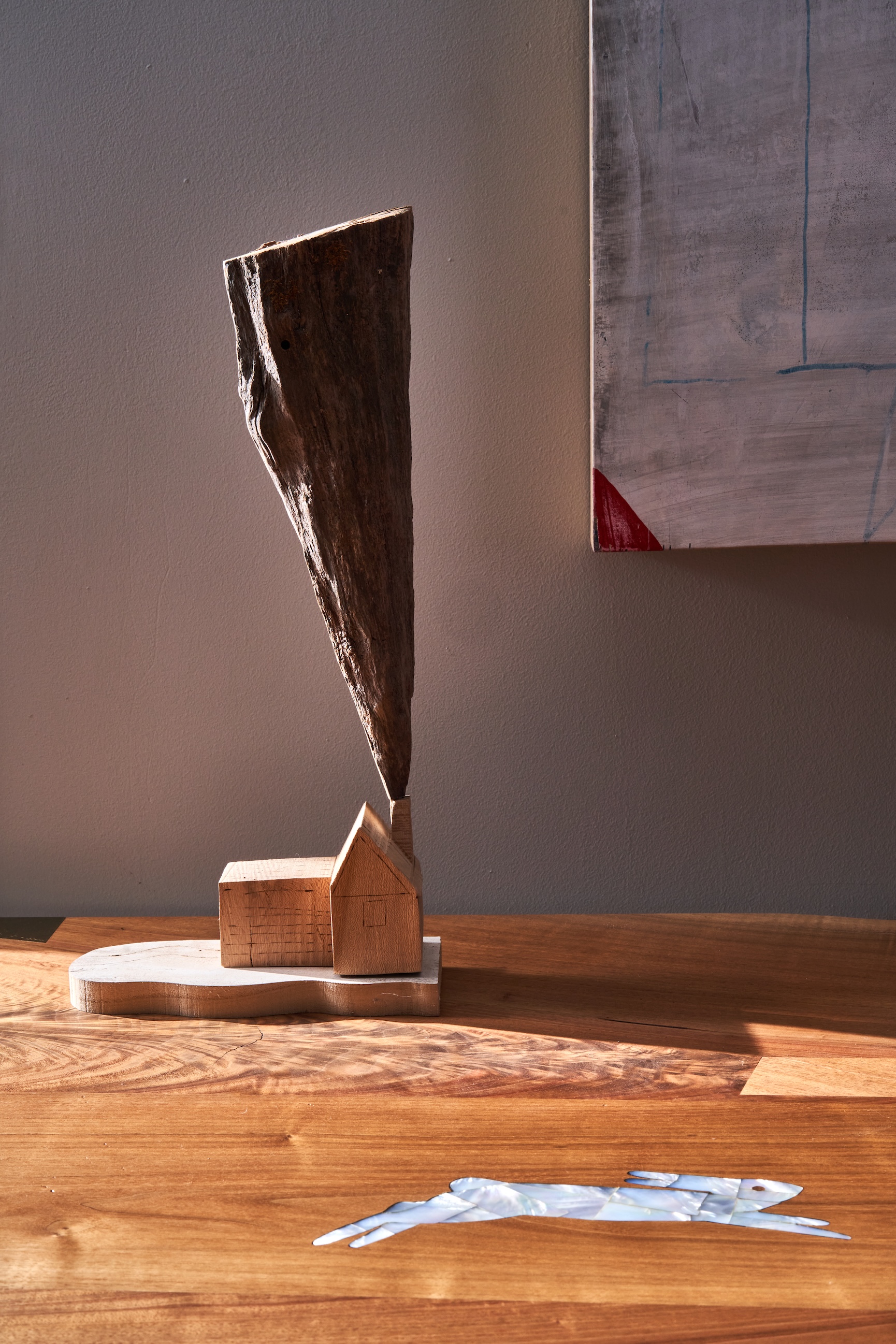 Above: Furniture inlay is a new Sawkille specialty: the desk leaping bunny is mother-of-pearl. The house sculpture is from an ongoing series that Jonah makes using found logs and twigs as chimney smoke.
Above: Furniture inlay is a new Sawkille specialty: the desk leaping bunny is mother-of-pearl. The house sculpture is from an ongoing series that Jonah makes using found logs and twigs as chimney smoke.
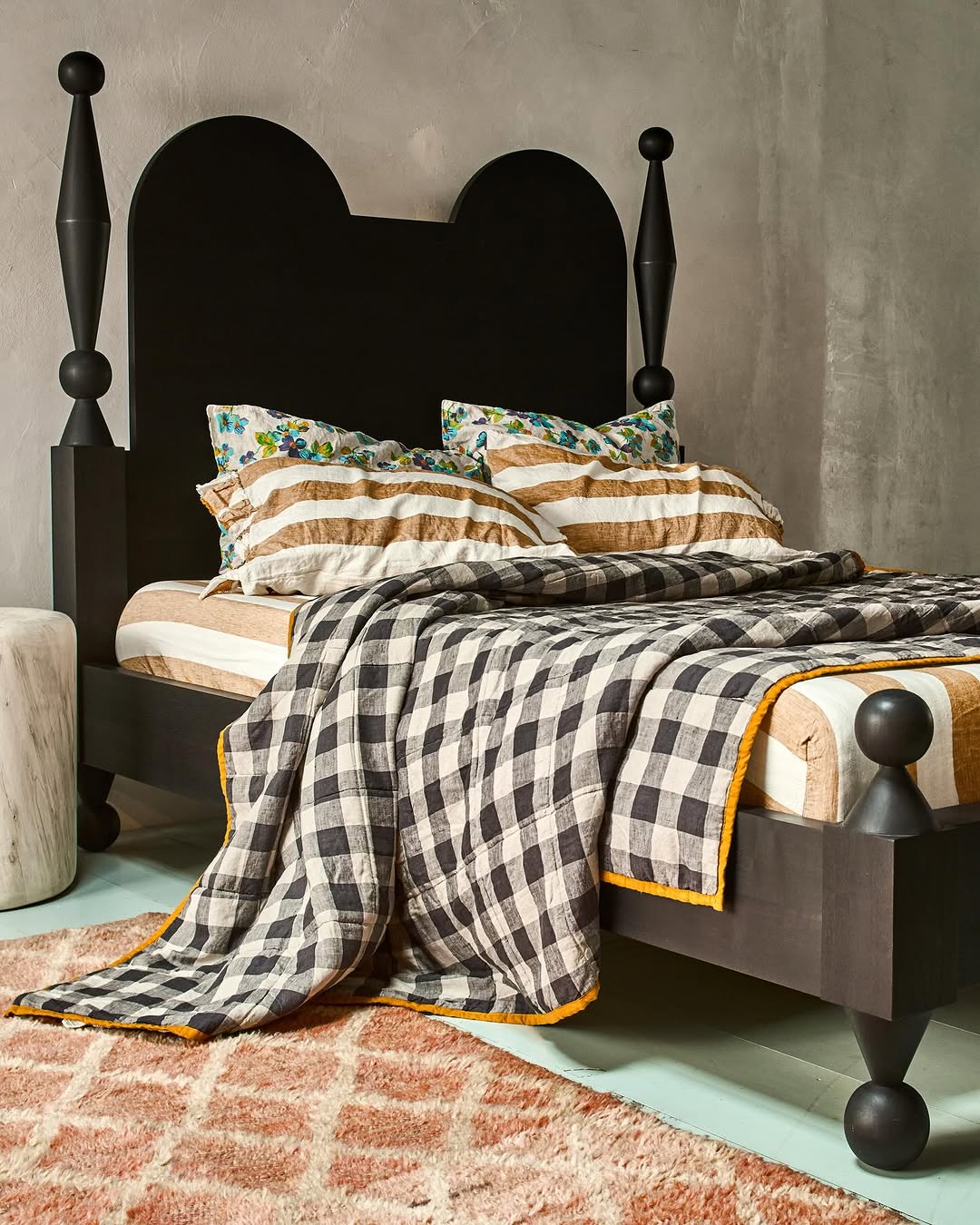 Above: The Hatfield Bed in ebonized American black walnut.
Above: The Hatfield Bed in ebonized American black walnut.
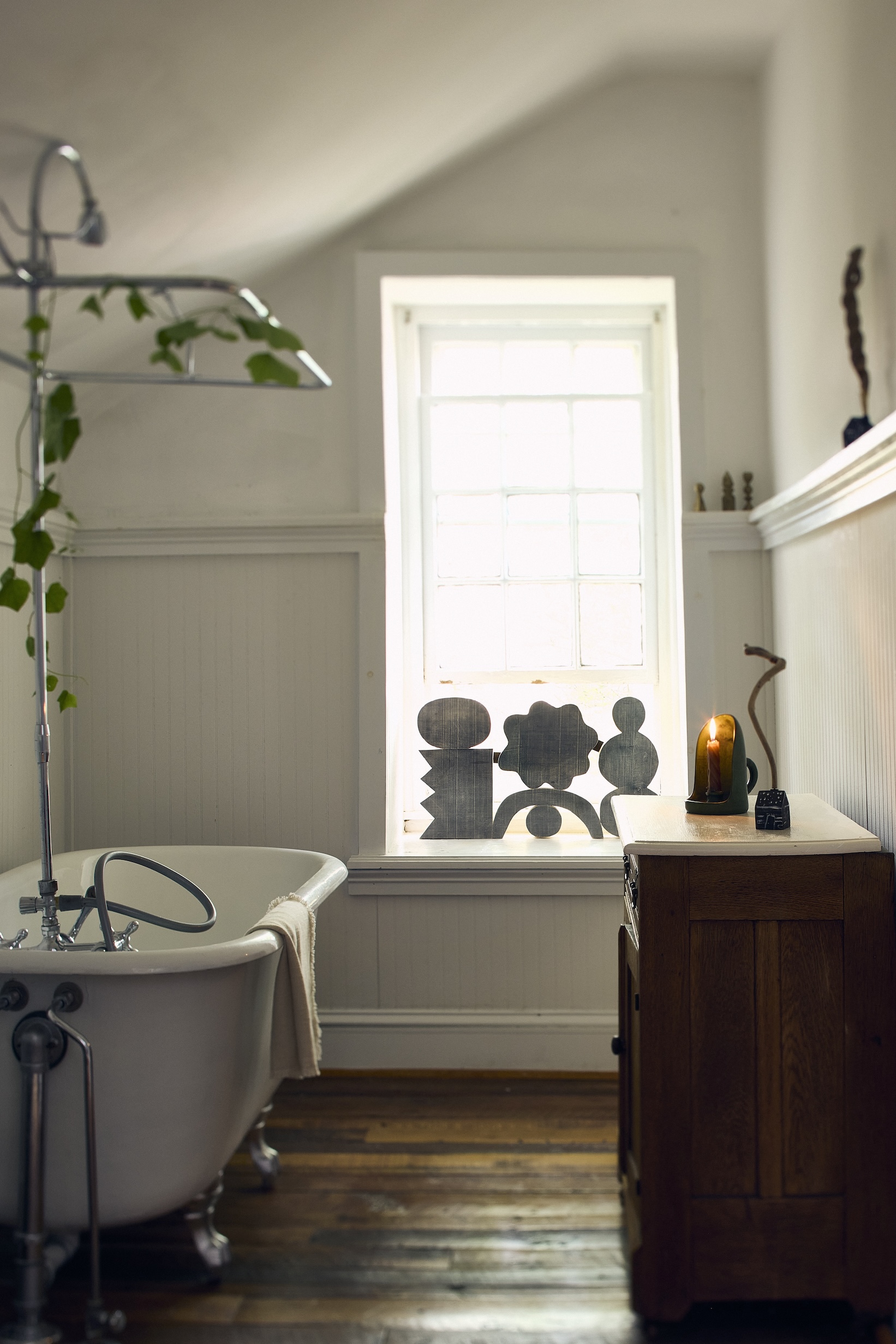 Above: The bathroom came with its claw-footed tub.
Above: The bathroom came with its claw-footed tub.
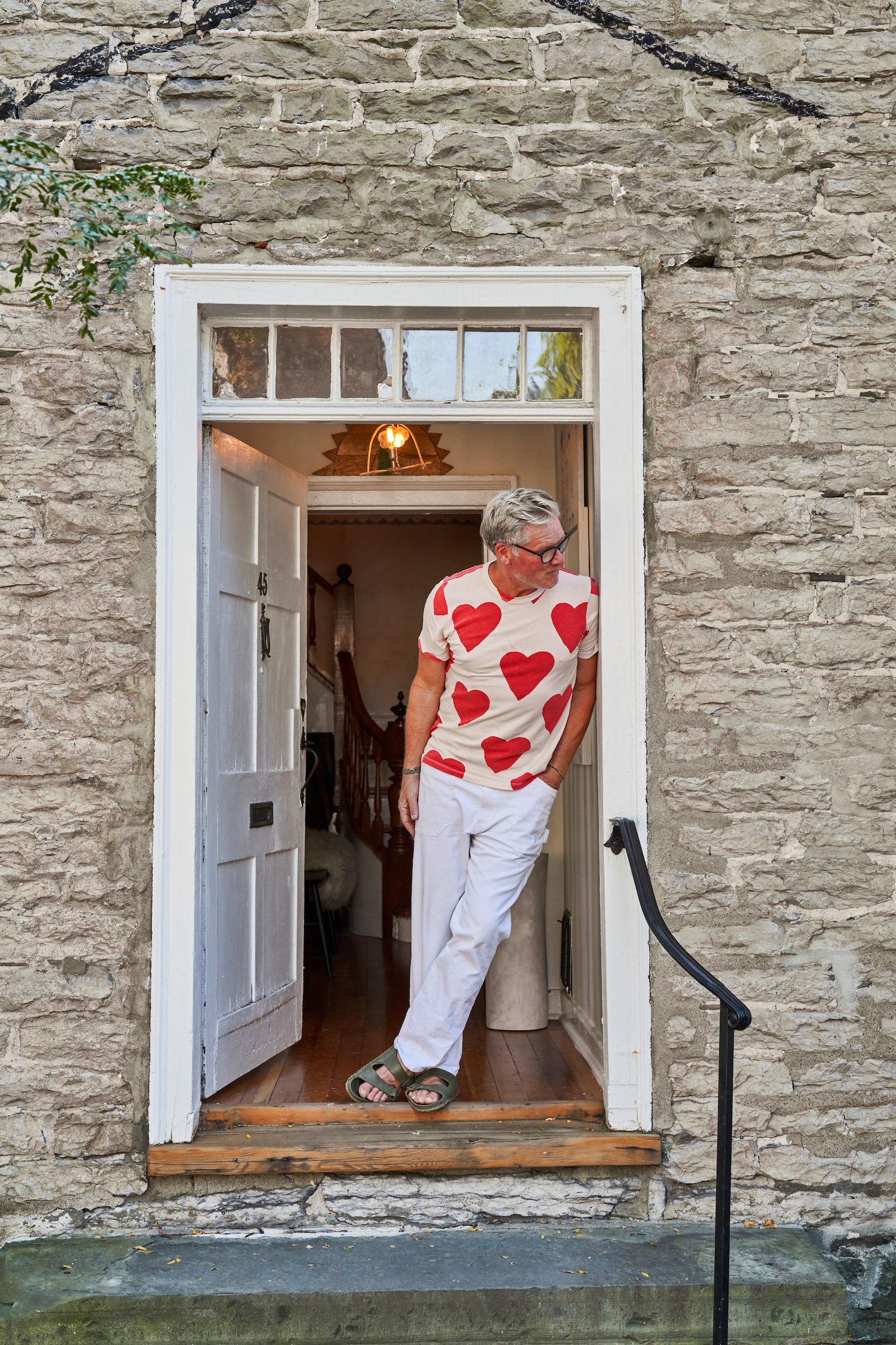 Above: Jonah is busy these days: Sawkille furniture designs are also available at March in SF and at Maya Froderman Gallery in Jackson Hole, Wyoming, where their next show opens in February.
Above: Jonah is busy these days: Sawkille furniture designs are also available at March in SF and at Maya Froderman Gallery in Jackson Hole, Wyoming, where their next show opens in February.
Some of our Sawkille spotlights from over the years:



